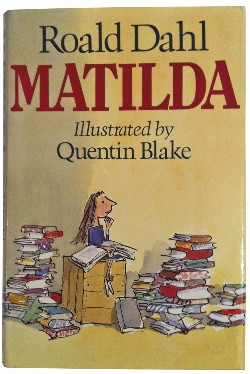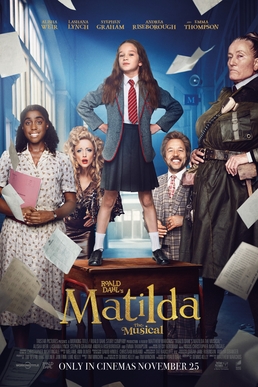The Chronicles of Narnia was the first fandom I ever participated in online, having loved the books since I was seven, and it's still very near and dear to my heart (just look at my Instagram handle). I used to be very active on the NarniaWeb forums around the time of the first Disney movie (TCoN: The Lion, the Witch, and the Wardrobe) through probably a bit after the second (TCoN: Prince Caspian) or third (TCoN: The Voyage of the Dawn Treader). More clearly, this was 2005-ish to around 2009/10. It was about the only social life I had at the time, until my last two years of undergrad; I think I was in grad school when I finally stopped reading and posting in the forums for good, although I still think of them and the people I met on there fondly. The NarniaWeb admins still send me a birthday message every year despite me being inactive.
In terms of how I see the Disney movies, I liked the first one the best (LWW), Prince Caspian the worst, and VotDT the mediumest. There were of course additions to LWW that I didn't like, little remarks and actions for the kids that were annoyingly precious or modern or childish (clearly added to up the drama and cater to modern American audiences), and the (IMO) unnecessary waterfall scene. I was most active in the NarniaWeb forums during the making of Prince Caspian, poring over and freaking out about movie news for probably a year and a half with other die-hard Narnia fans, which whipped me into a frenzy probably no movie could have lived up to. Prince Caspian, which strayed even farther from the source material than its predecessor and was given even more unnecessary and egregious additions such as the Susan/Caspian kiss (I shudder and C.S. Lewis rolls in his grave), was a huge let-down that disappointed me greatly. I was busier during VotDT's making, not reading or participating in the forums as much, partially because of school, having IRL friends, and due to the disappointment I had incurred. I enjoyed VotDT more because of this; if you expect nothing, there is room to be pleasantly surprised. I heard from my most recent CSL class professor that CSL's stepson put a stop to the Disney Narnia movies after the third because he felt they were straying too far from the Christianity of the books (my professor knows him personally). I of course would have liked to see more Narnia books turned into movies, but understand fully. He was right to do so, I think.
All this is to say: I've heard that Netflix is going to make new Narnia movies and possibly a TV show/s. This of course makes me a bit nervous but rather intrigued. Greta Gerwig is going to be the director, which I'm not totally on board with but trying to have an open mind about. I liked Lady Bird okay, liked Little Women quite a lot, and loved Barbie, but I'm not sure how her brand of feminist introspective teen-girlhood and young womanhood is going to fare. TCON has a few strong, well-rounded female characters, but they do not spend any time thinking about what it means to be a teenage girl/young woman in society and the way cultural and parental expectations effect their attempts to be themselves and live their lives the way they want. The closest to do so was Susan, and look where that got her. I didn't like Disney/Walden's attempt at this (introspective teen-girlhood), which consisted of having Susan be awkwardly talked to by a boy in the beginning of Prince Caspian, much to her dislike; this was clearly supposed to be a foil or something for her "relationship" with Caspian, which was barely (and badly) developed anyway. I'm not sure what the point of it was (the boy trying to talk to her in England); was it to show how Susan preferred muscular hot older guys to nerdy skinny boys? Was it an attempt to show character growth and maturing (Susan didn't like boys and then she did)? Was this their attempt at laying groundwork for what happens to Susan at the end of the series???
While typing this, I just remembered how they added a character to VotDT (a sailor's young daughter who stowed away on the ship to be with her dad) in order for the film to have another female character besides Lucy and the star's daughter (who is there for five seconds and isn't even named in the book) and to pass the Bechdel test, lol. I know the books are just so male, and there's not really a way to change that in a way that will keep everyone happy (far from it). IMO, the best way to do it is to make some minor characters female. Doctor Cornelius could be Doctor Cornelia, the seven lords Caspian tries to find in VotDT could be the seven lords and ladies, etc. This will make a lot of people angry but who cares. I'm sure the diversity that was "added" to the background characters made people upset; look at the blowback the current LOTR prequel TV show got for their Afrolatino elf (whom I love of course). As the books are set during the 1940s in our world and a classic fantasy European medieval era-inspired world, plus were written in the 1950s, there are period-typical attitudes towards gender roles. I'm curious to see how Greta Gerwig deals with these without making the changes too focus-pulling.
The Disney/Walden movies' director, Andrew Adamson, put in his boyish love of the battles and fighting in the Narnia books, expanding and inflating them to mythic LOTR-like proportions. I obviously feel the battles and fighting and war etc. have their place, but it was unnecessary to inflate them and add more; this made the movies feel like kiddie-LOTR or LOTR-lite. There are as many views of Narnia as there are readers, I guess. I personally liked the fantasy and magic stuff the best, as well as the history that is only hinted at but never fully told. I know Greta Gerwig loved the TCON books as a kid, as did most of us; hopefully the adaptations she helms will be balanced and not too much of anything.
I do think it makes sense to turn Voyage of the Dawn Treader into a TV show; the stories are very episodic anyway and would translate nicely into TV episodes. The Silver Chair would also work decently well as a TV show, as would The Last Battle. The other books, I feel, would not, although LWW and PC have of course already been turned into BBC miniseries (TV shows with only one series, usually of 4-6 episodes) as well as movies.
One thing I am really looking forward to is new Narnia merch. When the Disney movies came out, I was in college and had very little money, so I couldn't buy everything I wanted to. This time I have plenty of money to spend on frivolities, but my fear is that Netflix won't put out any official Narnia merch. I can't recall seeing any official merch for most Netflix shows, apart from a few shows' merch on Hot Topic/Boxlunch. Well, there's always fan-made merch.
~
A new set of illustrated covers for the TCON books were announced; they remind me a lot of Cliff Nielsen's excellent cover illustrations as they're both dynamic and computer/digitally illustrated, only the new ones look extra dramatic. I mostly liked them, until someone online pointed out that they look AI-generated, and my stomach sank. After scouring them and finding Digory's case of AI-hand, I commented on the official Narnia Instagram post about the covers asking if they were AI-generated, and both the artist and his daughter replied that they were not (kind of embarrassing but I did comment somewhere very visible, so). I do kind of agree with some of the other comments that all fantasy covers look kind of the same nowadays. I don't think I'll buy a set of the new covers books brand-new, unless I find a great deal or something, and my guess is that it'll take a few years after they are published for copies with these covers to make their way to thrift stores and secondhand bookshops if I want to buy them the way I've bought the others (aka individually and slowly depending on what the thrift stores have at the time).
I was intrigued by the artist adding Easter eggs to the cover illustrations in the form of the planetary symbols for the planet each book falls under according to Michael Ward and his Planet Narnia/seven heavens theory. I don't subscribe to it but I was brought much closer to agreement by a classmate's presentation on that theory in my CSL class (Dr. Ward also gave a presentation on his planetary theory to my CSL class since my professor knows him as well). For Owen Richardson (the new book covers' artist) to use the books' assigned (by Dr. Ward) planetary symbols show that he loves the Narnia books enough to read books about them; I am comforted by this knowledge.
Someone else pointed out online that they're using the Disney logo/font for the new books' titles, and won't that look dated, especially by the time the Netflix movies come out? I like the Disney font a lot but I rather agree; it'll be cool to see what Netflix does with the titles design.








